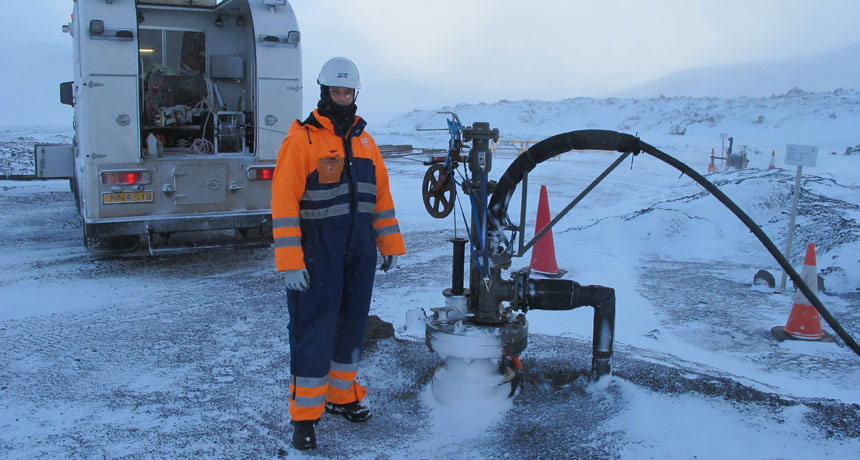(for more about Power Words, click here)
anthropogenic An adjective that describes a human influence on something. It was coined by putting together the prefix “anthro,” meaning human, and suffix “genic,” meaning caused by.
atmosphere The envelope of gases surrounding Earth or another planet.
basalt A fine-grained rock that forms when lava cools quickly.
carbon dioxide (or CO2) A colorless, odorless gas produced by all animals when the oxygen they inhale reacts with the carbon-rich foods that they’ve eaten. Carbon dioxide also is released when organic matter (including fossil fuels like oil or gas) is burned. Carbon dioxide acts as a greenhouse gas, trapping heat in Earth’s atmosphere. Plants convert carbon dioxide into oxygen during photosynthesis, the process they use to make their own food.
climate The weather conditions prevailing in an area in general or over a long period.
climate change Long-term, significant change in the climate of Earth. It can happen naturally or in response to human activities, including the burning of fossil fuels and clearing of forests.
geochemistry A science that deals with the chemical composition of and chemical changes in the solid material of Earth or of another celestial body (such as the moon or Mars). Scientists who study geochemistry are known as geochemists.
geothermal energy The internal heat of the Earth or other planet. It can be tapped as an energy source to heat buildings at the surface.
greenhouse gas A gas that contributes to the greenhouse effect by absorbing heat. Carbon dioxide is one example of a greenhouse gas.
groundwater Water that is held underground in the soil or in pores and crevices in rock.
lava Molten rock that comes up from the mantle, through Earth’s crust, and out of a volcano.
limestone A natural rock formed by the accumulation of calcium carbonate over time, then compressed under great pressure. Most of the starting calcium carbonate came from the shells of sea animals after they died. However, that chemical also can settle out of water, especially after carbon dioxide is removed (by plants, for instance).
mineral The crystal-forming substances, such as quartz, apatite, or various carbonates, that make up rock. Most rocks contain several different minerals mish-mashed together. A mineral usually is solid and stable at room temperatures and has a specific formula, or recipe (with atoms occurring in certain proportions) and a specific crystalline structure (meaning that its atoms are organized in certain regular three-dimensional patterns).
mineralization The process by which gas and other organic matter turns into minerals.
seltzer water Another name for the soft drink known as carbonated water or club soda








